Thinking About Angel Bites? Here’s the Real Talk You Need First
So, you’ve been scrolling online and landed on a piercing that’s hard to ignore: the double upper lip piercing, known more glamorously as ‘angel bites.’ I get it. They frame a smile beautifully and have a cool, symmetrical edge. As someone who’s spent years in the piercing world, I’ve seen countless people walk in with a photo, ready to go. But my job isn’t just to poke holes; it’s to make sure that piercing is a safe, happy, and long-term success for you.
In this article
Honestly, a great piercing is way more than just good luck. It’s a combination of your unique facial anatomy, the skill of your piercer, and your commitment to the healing process. Before we even think about needles, let’s have a real chat about what you’re signing up for.
First Things First: Is This Piercing Right For You?
When you come in for a consultation, the very first thing a good piercer will do is take a long look at your face. Not in a weird way! We’re studying your anatomy, which is the single most important factor for a piercing like this.

Angel bites are two separate piercings placed on either side of the philtrum (that little groove under your nose). Getting them to look balanced is a tricky art. We need to check out a few things:
- Your Lip Muscles: Your lips are powered by a complex muscle called the orbicularis oris. It’s what you use for smiling, talking, and puckering up. I’ll ask you to make a bunch of faces so I can see how your skin shifts and moves. The goal is to find a placement that works with your natural expressions, not against them. Placing it in a spot with too much pull or creasing can lead to irritation and a piercing that just never settles down.
- Blood Vessels and Nerves: The upper lip is full of them. A seasoned pro knows how to assess the tissue to avoid major blood vessels. Sure, a little pinprick of blood is normal, but hitting a bigger vessel can cause some gnarly bleeding and swelling. This is where experience really counts—you can’t learn that from a YouTube video.
- Your Gums and Teeth: Let’s be frank: any piercing inside your mouth comes with risks to your dental health. It’s just part of the deal. The flat-back discs of the jewelry will rest against your upper gums. If you already have some gum recession or a very high smile line, these piercings could make things worse over time. I’ll always be upfront about the potential risks. If it looks like a bad match, I’ll be the first to suggest a different piercing that will be safer for you long-term.
And then there’s symmetry. Human faces are almost never perfectly symmetrical. One side of your smile might lift higher, or your nose might sit slightly off-center. A good piercer doesn’t just use a ruler; they use their eyes. We’ll mark the spots and have you look in the mirror while you talk and smile to make sure the placement looks balanced and you’re 100% happy with it before the piercing happens.
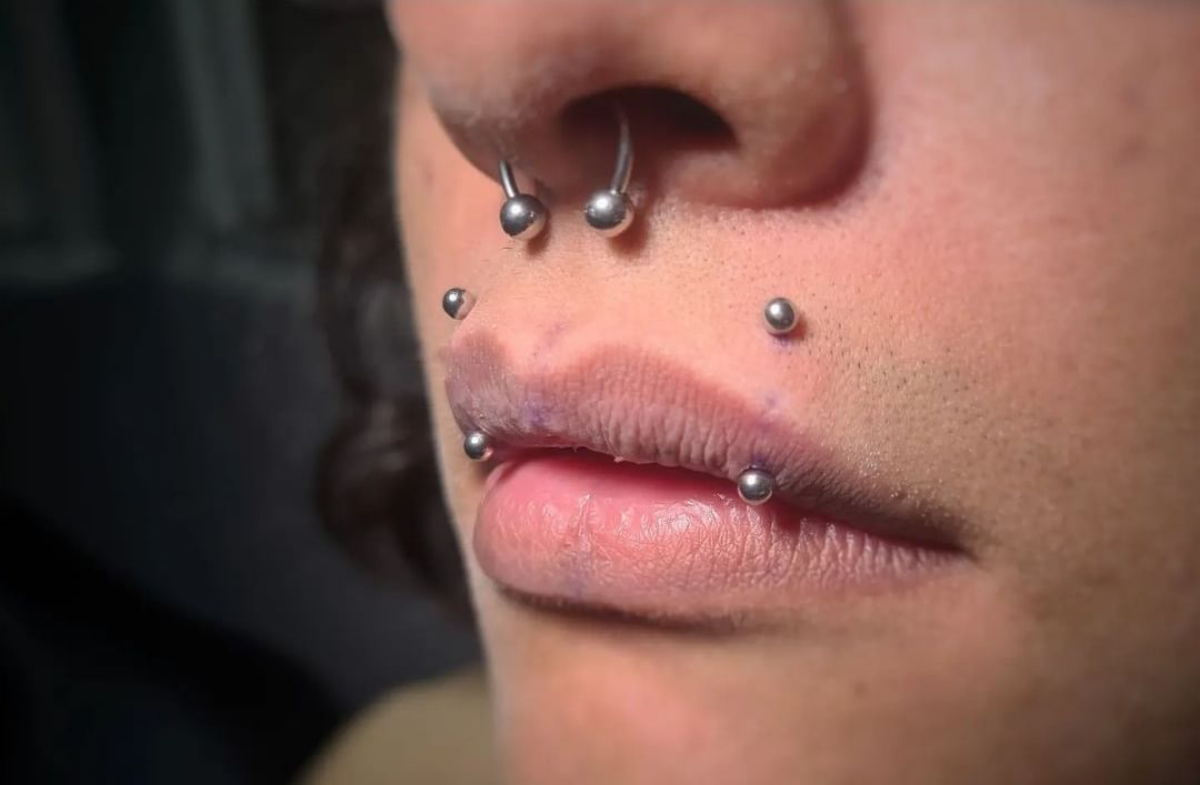
The Piercing Process & The Pain Question
Okay, so we’ve decided it’s a go. Let’s talk about the actual procedure and the question everyone is thinking about.
A professional studio should feel clean and sterile, period. Your piercer should open all sterile equipment, like needles and jewelry, from a sealed pouch right in front of you. And please, for the love of all that is holy, if you see a piercing gun, walk out. Piercing guns cause blunt force trauma and can’t be properly sterilized. We only use sharp, single-use, hollow needles.
So, what about the pain? On a scale of 1 to 10, most people put this at a solid 4-6. It’s a very sharp, quick pinch that’s over in a second. You’ll take a deep breath in, and on the exhale, the piercing is done. The second one sometimes feels a bit more intense, but mostly because you know it’s coming! The sharp sting fades very quickly into a dull throb.
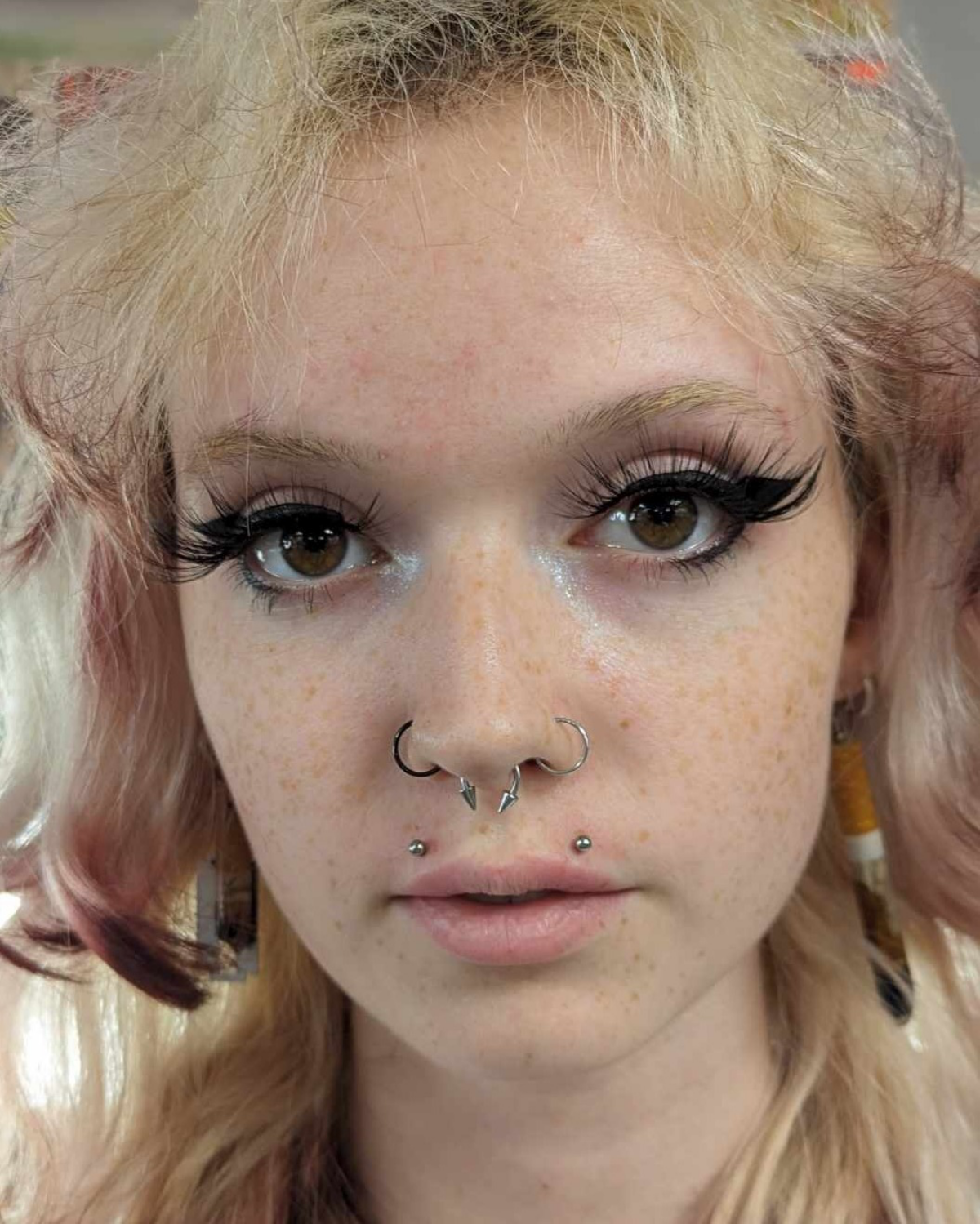
Healing, Aftercare, and What to Expect
Healing angel bites takes patience. You’re looking at a 3 to 6 month journey for them to be fully, truly healed, but the first few weeks are the most intense.
Your lip is going to swell—a lot. Expect the peak swelling around day three. Gently sucking on ice chips and sleeping with your head slightly elevated can be a huge help. You’ll also notice some tenderness and maybe a bit of pinpoint bleeding for the first day or two. This is all normal.
Healing Gunk vs. an Actual Infection
This is probably the #1 thing people worry about. It’s crucial to know the difference:
- Normal Healing: You’ll see thin, whitish-yellow fluid that dries into ‘crusties’ around the jewelry. This is just lymph fluid, and it’s a sign your body is doing its job. It should rinse away easily when you clean it.
- Signs of Infection: This is different. We’re talking thick, opaque, green or dark yellow pus. The area will likely be very red, swollen, and hot to the touch. You might also have a fever or feel unwell. If you see these signs, don’t just wait it out—contact your piercer and see a doctor.
Your Daily Routine
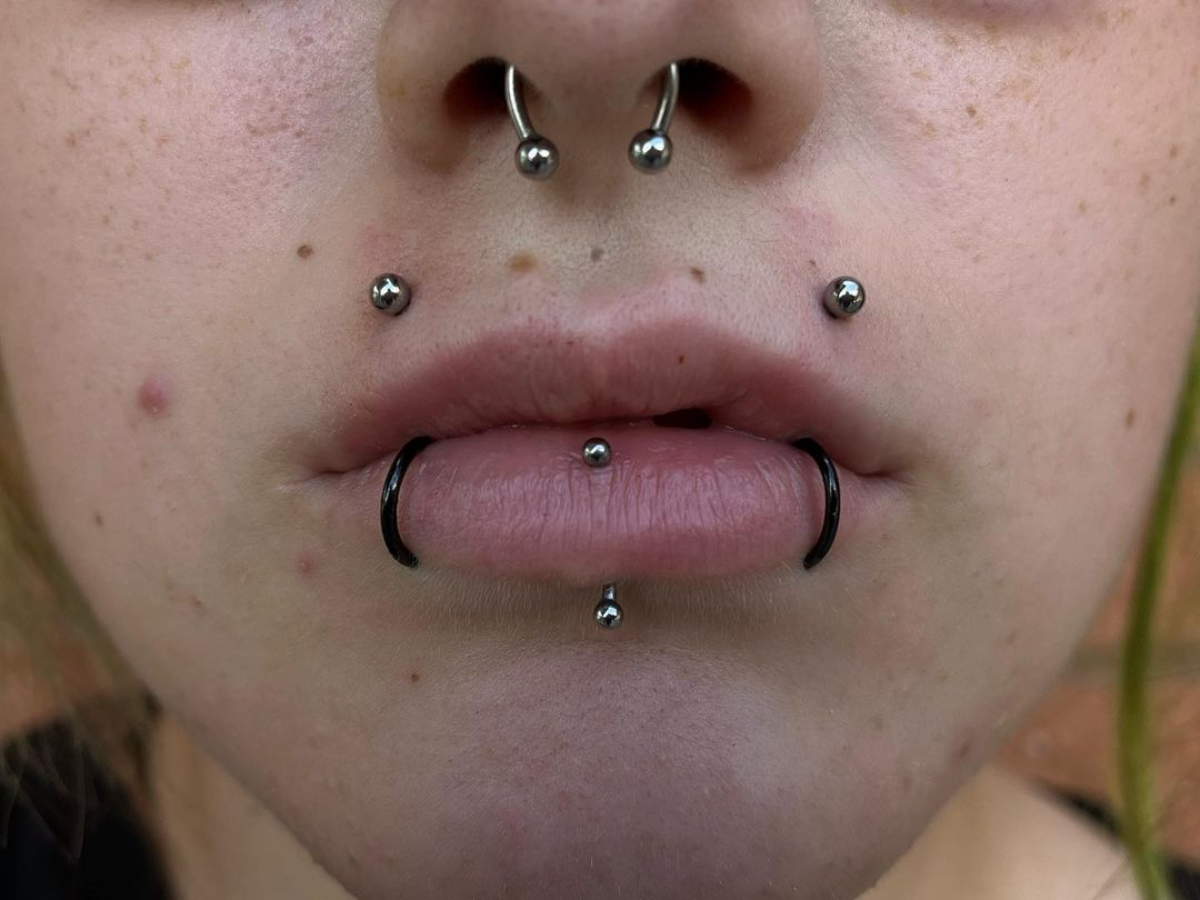
Aftercare is simple. Don’t overdo it.
- Outside: Twice a day, spray the piercings with a sterile saline wound wash. A popular brand is NeilMed, which you can find at most pharmacies for about $15. Don’t try to mix your own salt water; it’s impossible to get the ratio right. Gently pat the area dry with a clean paper towel.
- Inside: After you eat or drink anything besides water, rinse your mouth for 30 seconds with an alcohol-free mouthwash. Biotene is a great option and usually costs around $10. If you’re in a pinch, a thorough rinse with bottled water is better than nothing.
- The Don’ts: No touching with unwashed hands. No oral contact. Avoid pools and hot tubs. Be super careful with makeup and moisturizers near the piercings.
Quick Tip: For the first week, stick to soft foods. Think smoothies, yogurt, oatmeal, and yes, even ice cream. Your swollen lip will thank you for not having to chew a burger.
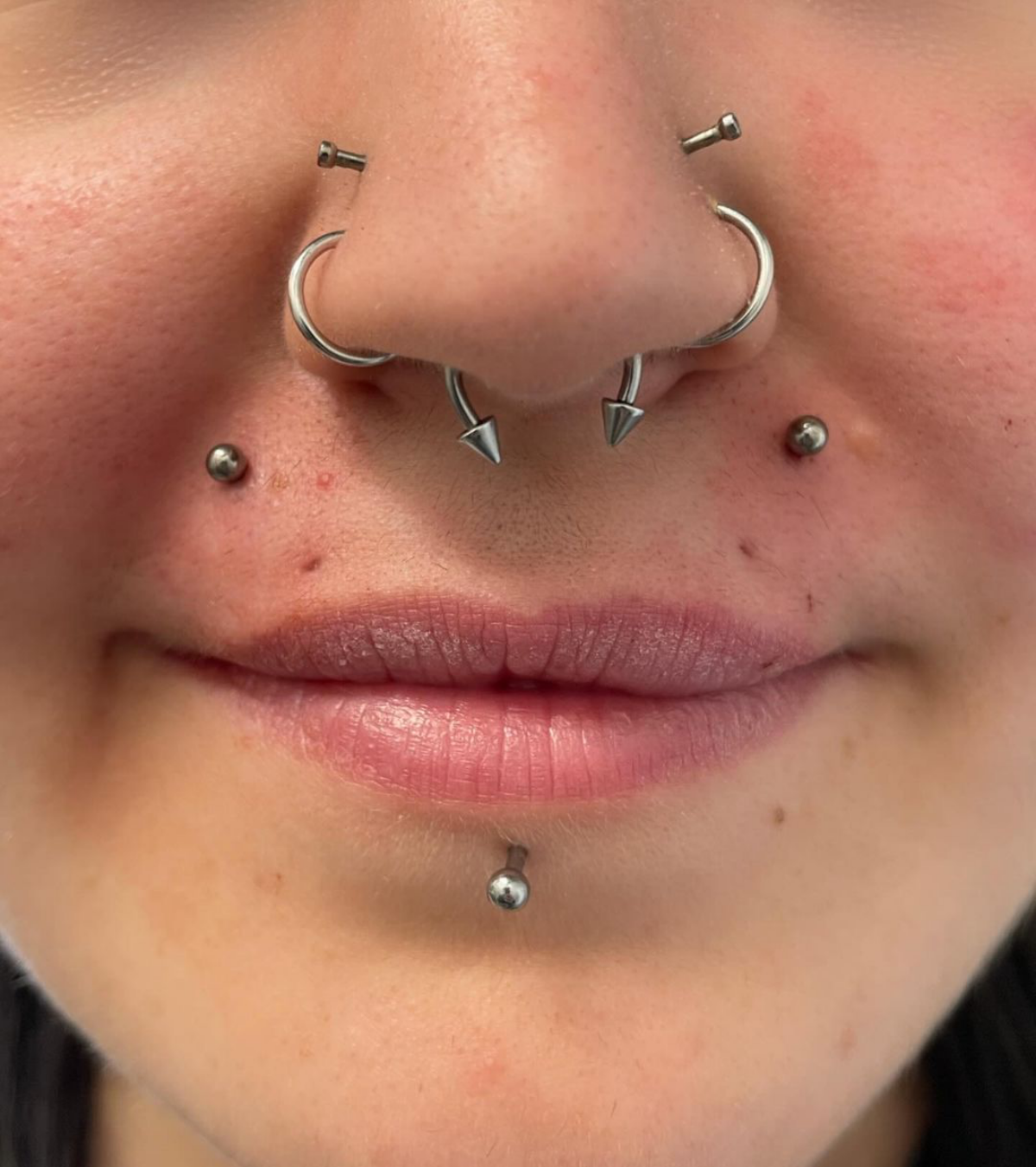
Jewelry, Downsizing, and Long-Term Care
The jewelry you start with is critical. It will be a labret stud with a flat back, and it will be extra long to accommodate swelling. This is NON-NEGOTIABLE.
Come Back for a Downsize!
Heads up! After about 4 to 6 weeks, you MUST go back to your piercer to have shorter posts put in. That initial swelling will have gone down, and the long bars will start to catch on things and cause irritation. More importantly, shorter posts that sit flush are essential for protecting your teeth and gums from damage. This follow-up is not optional—it’s a key part of the process.
Safe Metals and Where to Find Them
For new piercings, quality material is everything. Look for implant-grade titanium (ASTM F-136), Niobium, or solid 14k-18k gold (not plated!). Reputable body jewelry brands that the pros trust include names like Anatometal, Neometal, and BVLA. These are guaranteed to be body-safe.
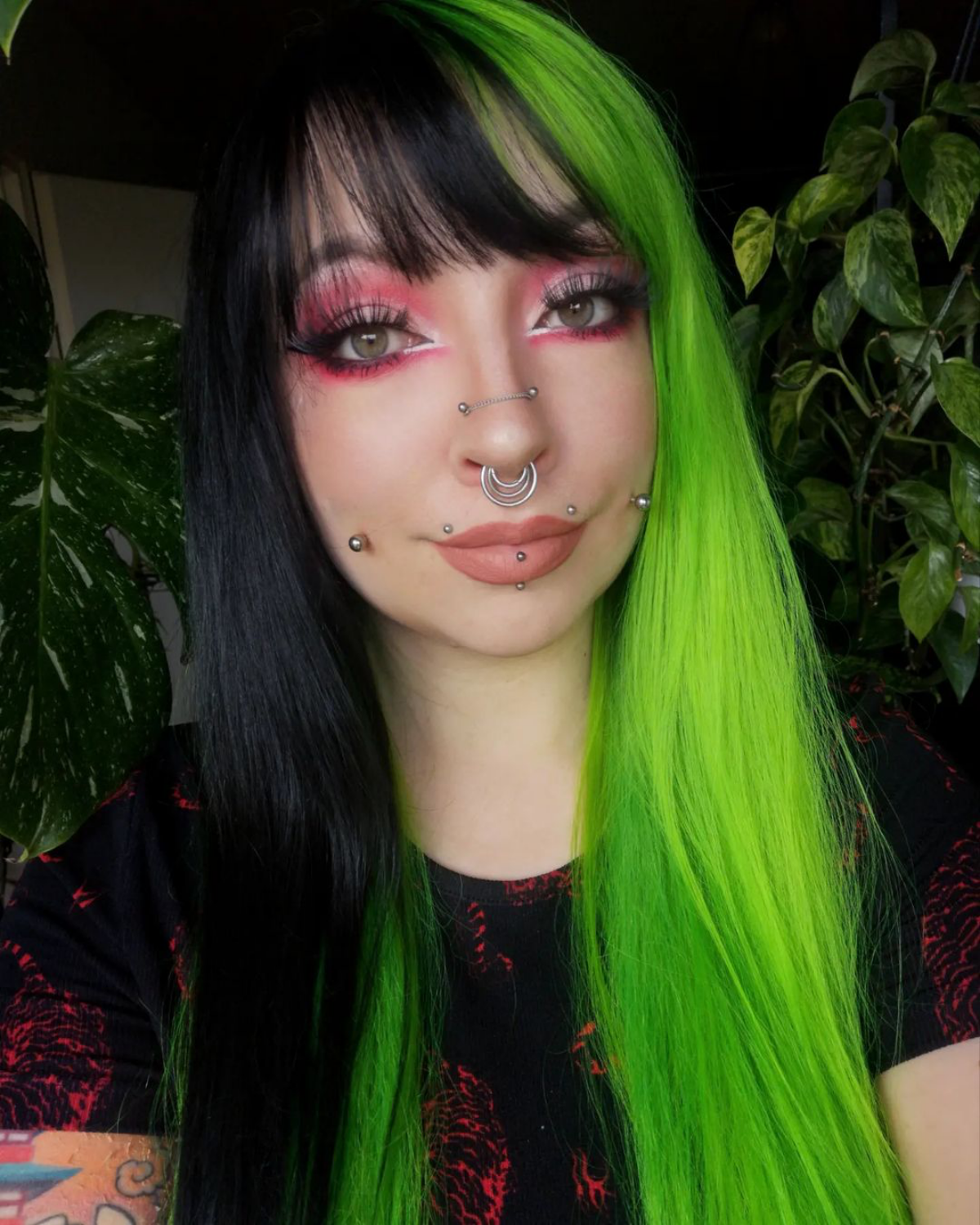
Oh, and what about “surgical steel”? Honestly, it’s a gamble. The term isn’t tightly regulated, so it can be a mystery metal containing nickel and other irritants. For an oral piercing, it’s just not worth the risk.
The Real Cost and The Long-Term Reality
Let’s break down the budget. You’re not just paying for one piercing, but two. Here’s a realistic breakdown:
- Piercing Fee (for the pair): $80 – $150+, depending on the studio’s location and reputation.
- Initial Implant-Grade Jewelry: $60 – $120+ for two basic, implant-grade titanium studs. Fancier ends will cost more.
- Aftercare Supplies: Around $25 for saline spray and mouthwash.
So, you’re looking at a total upfront cost of roughly $165 to $300+. This is an investment in your body, so it’s not the place to bargain hunt. Good piercers who use high-quality jewelry charge what they’re worth.
And what happens if you decide you’re over them someday? If you take them out, the holes in your mouth will close up very quickly. On the outside, you’ll be left with two small, permanent marks. They usually heal to look like tiny freckles or shallow dimples—noticeable up close, but not usually from a distance.
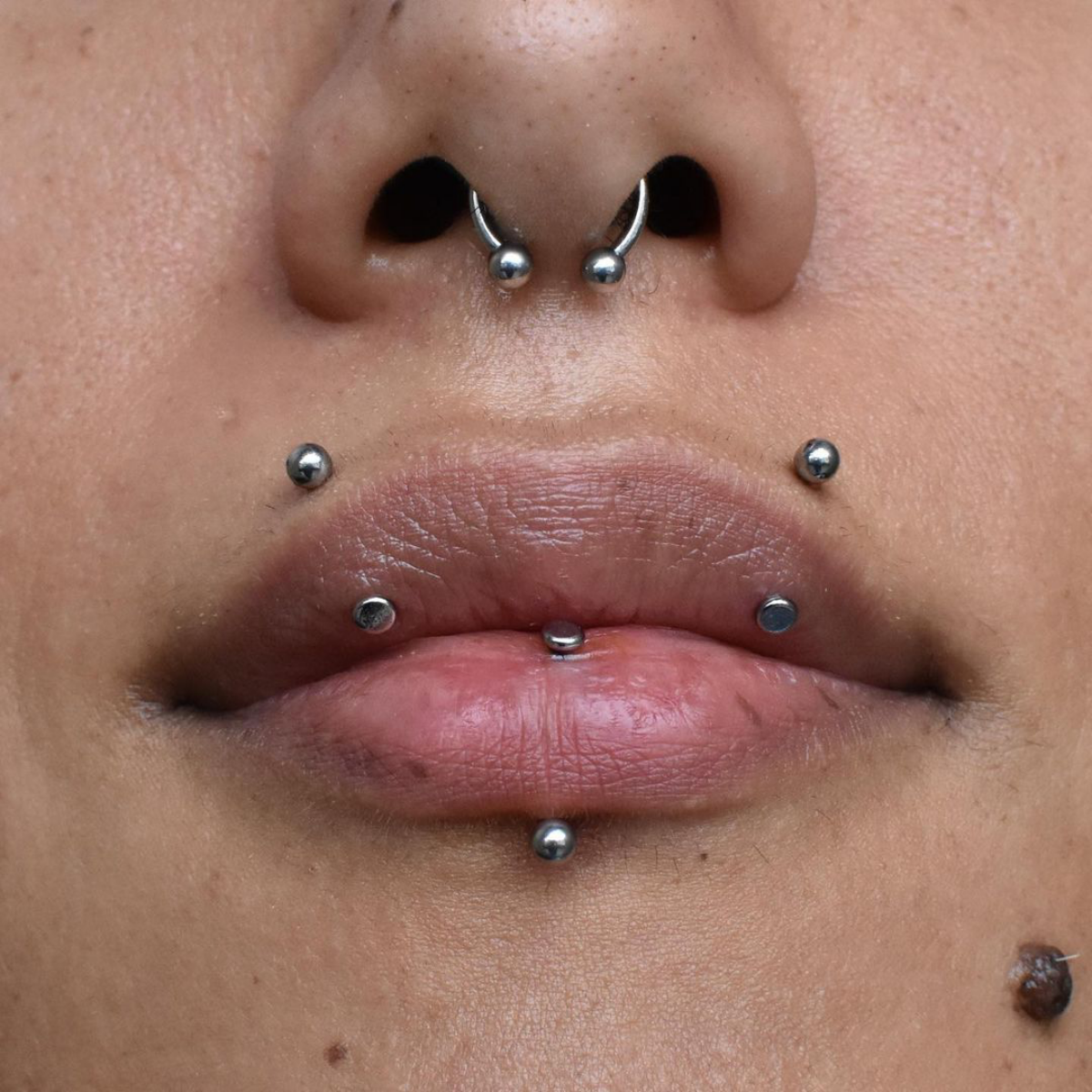
At the end of the day, angel bites can be an amazing and expressive piercing. Just do your homework, find a piercer you trust (a great place to start is the online member locator for any major professional piercing organization), and be prepared to take amazing care of them. They’re worth the effort!
Galerie d’inspiration
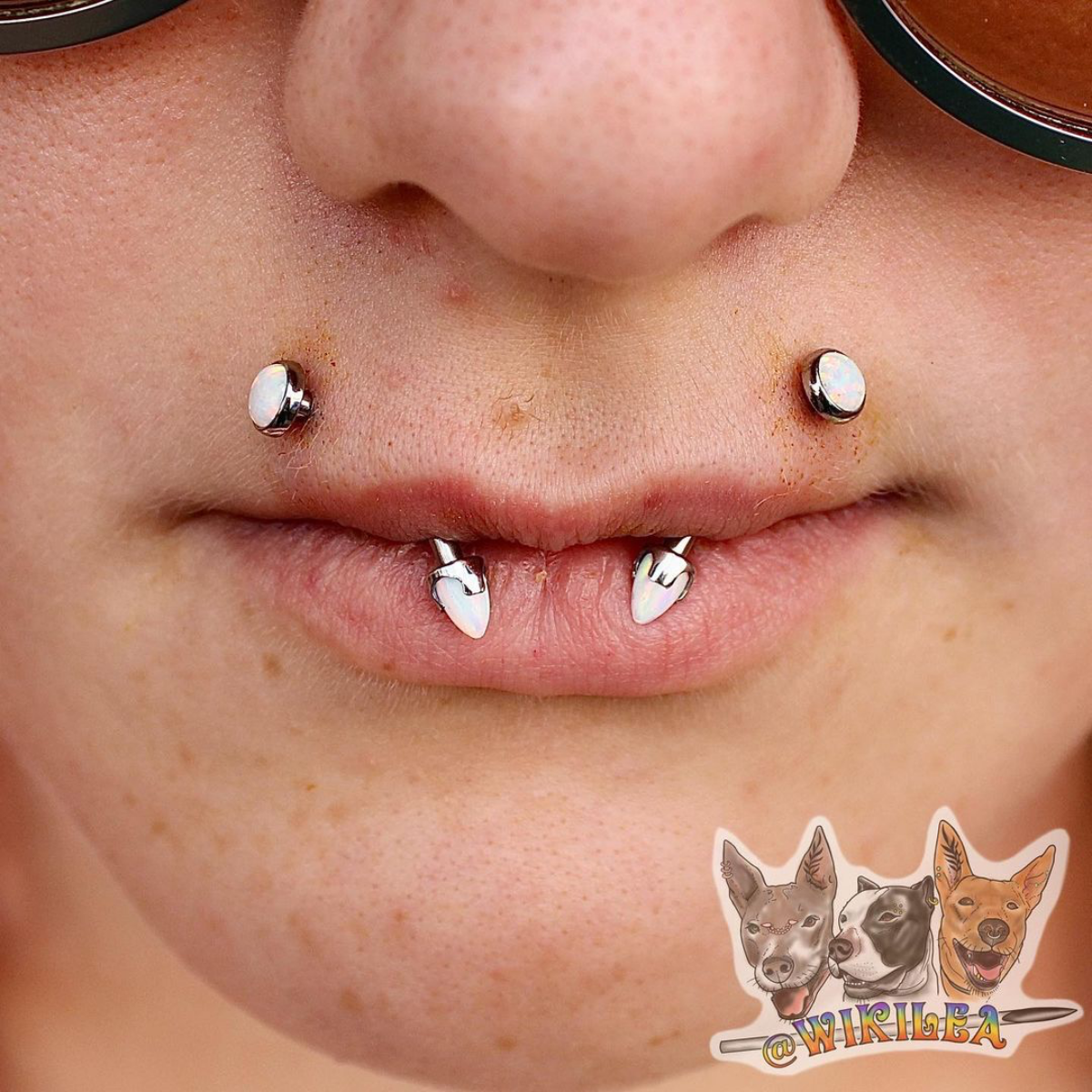
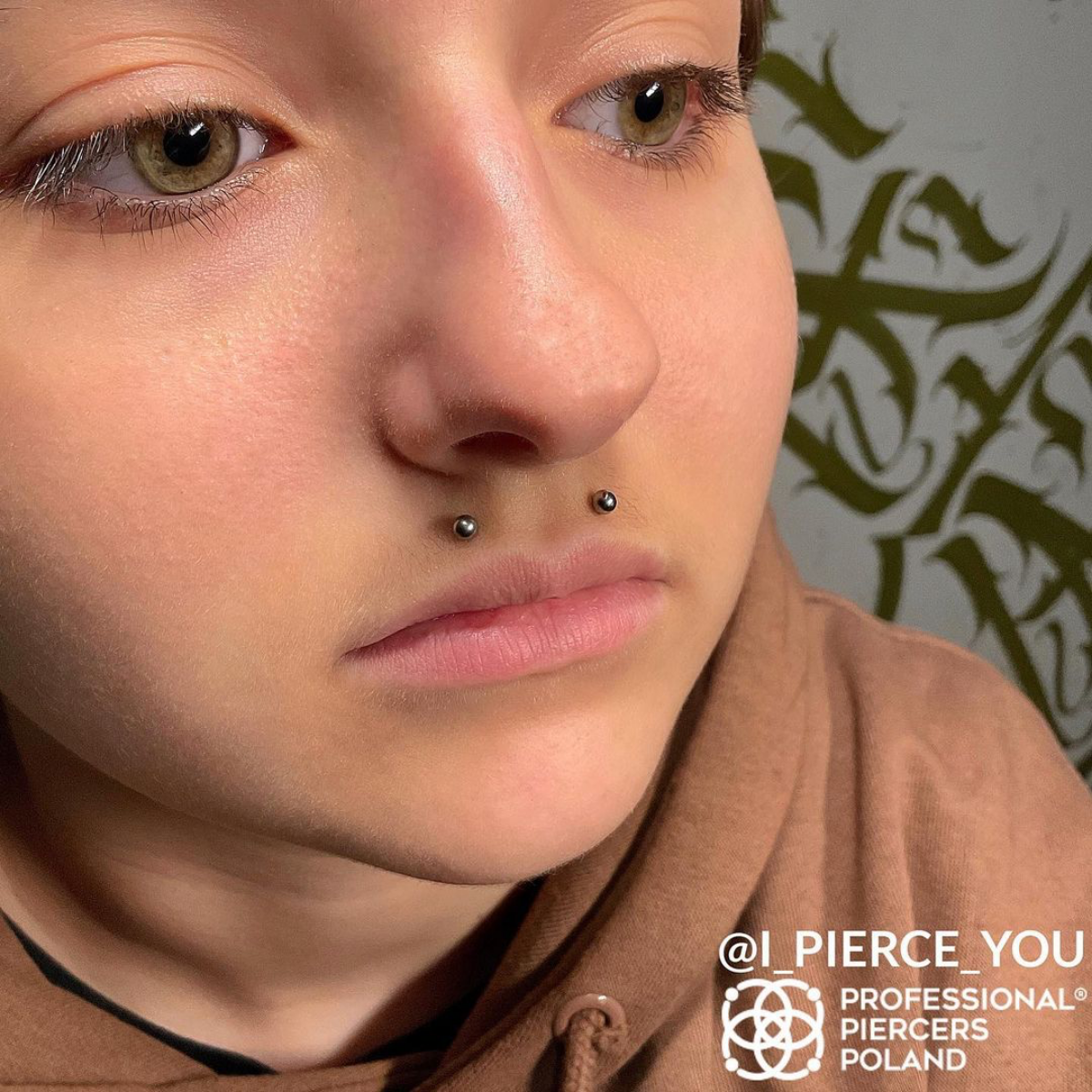
- Reduced gum irritation
- A more secure fit that moves with your lip
- Less risk of accidentally biting the jewelry
The secret? Downsizing your jewelry posts. After the initial 2-4 weeks, the initial swelling will have gone down. Go back to your piercer to have shorter, perfectly fitted labret posts put in. This is the single most important step for long-term comfort and dental health.

Angel bites are all about symmetry, but that doesn’t mean your jewelry has to be identical. For a curated, high-end look, consider pairing a simple gold ball on one side with a sparkling bezel-set diamond or opal on the other. Quality brands like BVLA (Body Vision Los Angeles) or Anatometal offer countless threadless ends that you can mix and match to create a signature style that’s uniquely yours.

The Association of Professional Piercers (APP) recommends only cleaning healing piercings with a sterile saline solution.
This means ditching the harsh stuff like alcohol, hydrogen peroxide, or antibacterial soaps. These can dry out the delicate healing tissue, causing irritation and delaying the process. A simple sterile saline spray, like NeilMed Piercing Aftercare, twice a day is all you need to keep your new piercings clean and happy.
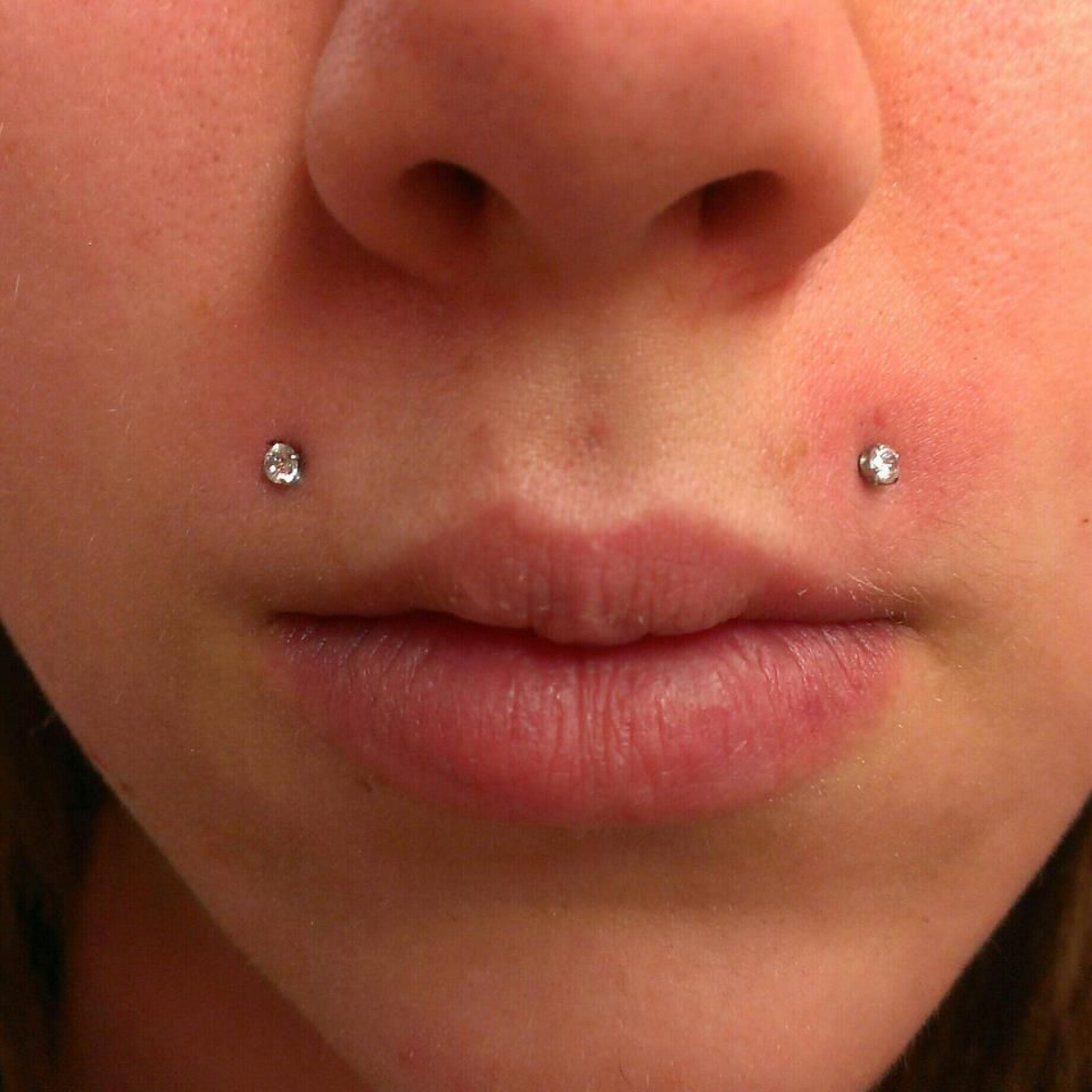
Implant-Grade Titanium (ASTM F-136): This is the gold standard for initial piercings. It’s nickel-free, highly biocompatible, and lightweight, minimizing the risk of allergic reactions and irritation during the crucial healing phase.
14k or 18k Solid Gold: Perfect for a touch of luxury once healed, but be picky. Ensure it’s solid, not plated, and specifically alloyed to be biocompatible. Avoid it for initial piercings if you have sensitive skin, as even quality gold can sometimes cause reactions.
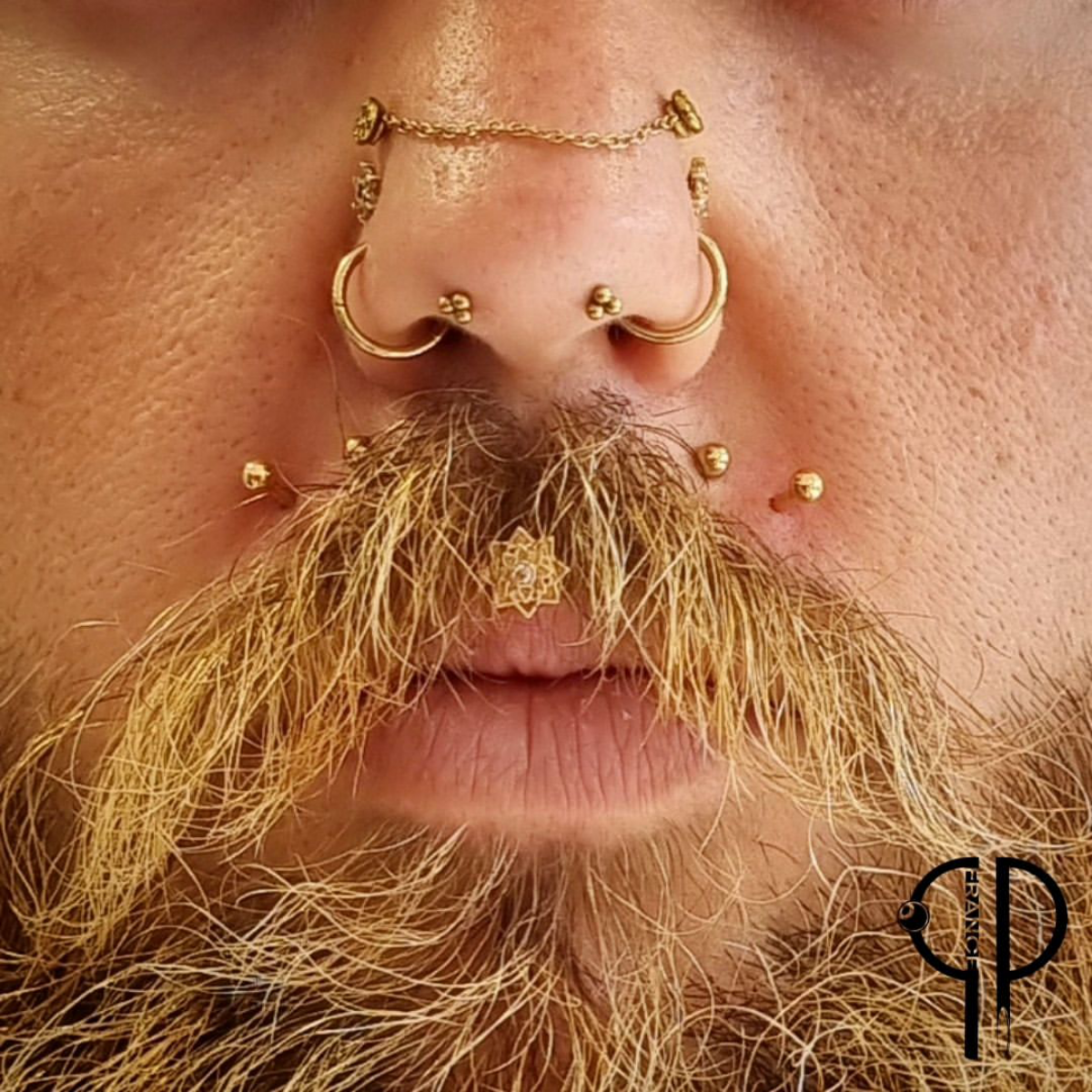
How on earth am I supposed to eat and drink?
For the first week or two, think soft. Smoothies (with a spoon, not a straw!), yogurt, oatmeal, and soup will be your best friends. Take small bites and chew carefully, trying to keep food away from the front of your mouth. Avoid anything spicy, overly salty, or alcoholic, as these can increase swelling and irritation. And yes, you’ll probably have to temporarily say goodbye to big, messy burgers.

A study in the International Journal of Dental Hygiene found that over 40% of individuals with lip piercings experienced some degree of gum recession.
While that sounds scary, it underscores the importance of what the article stresses: proper placement and jewelry. A piercer who carefully places the piercing high enough and the wearer who downsizes their jewelry post-swelling drastically reduce the constant friction that leads to gum damage.
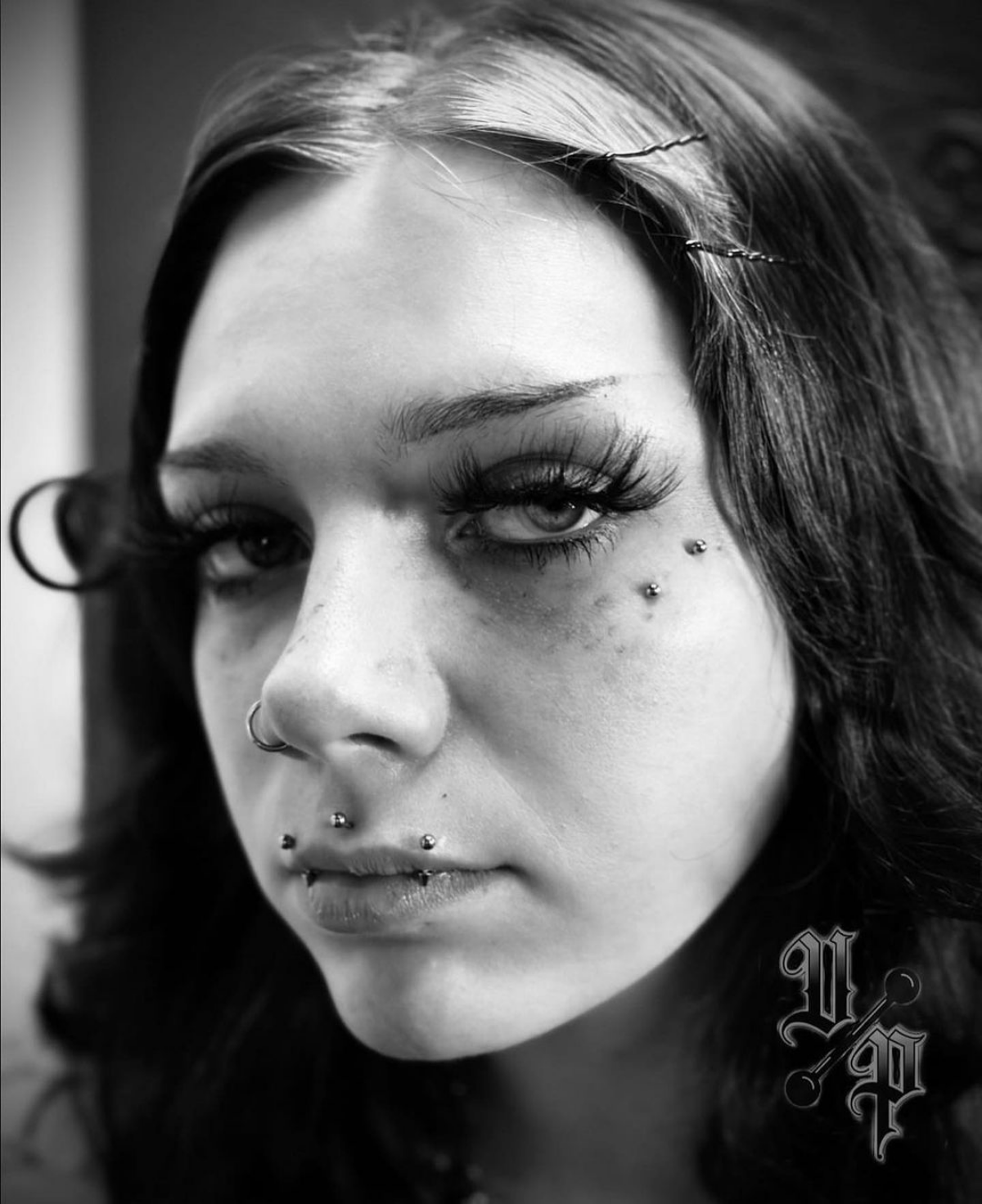
Crucial reminder: Do not touch, twist, or turn your jewelry. The only time you should touch your piercings is when cleaning them with clean hands. Unnecessary movement can introduce bacteria, create scar tissue, and damage the fragile fistula (the healing tube of skin) your body is working hard to create.

- Clean the outside with sterile saline spray twice a day.
- After eating, gently rinse your mouth with non-alcoholic, fluoride-free mouthwash or bottled water.
- Avoid submerging them in bodies of water like pools, lakes, or hot tubs for at least 4-6 weeks.
- Pat the area dry with a clean, disposable paper towel; cloth towels can harbor bacteria and snag on jewelry.
Kissing is off-limits for the initial healing period, typically at least 3 to 4 weeks. Introducing someone else’s saliva and bacteria into two fresh wounds is a recipe for infection. Be patient—it’s worth the wait for a healthy, beautifully healed piercing.










